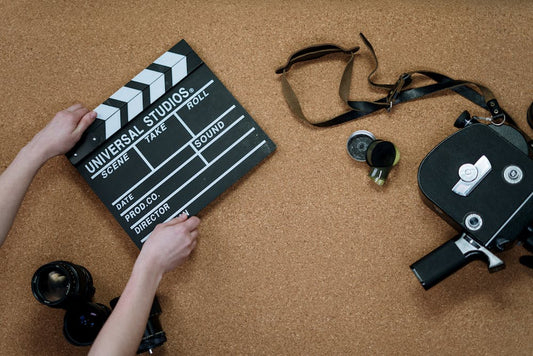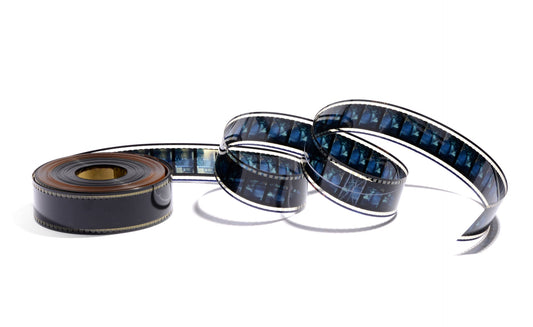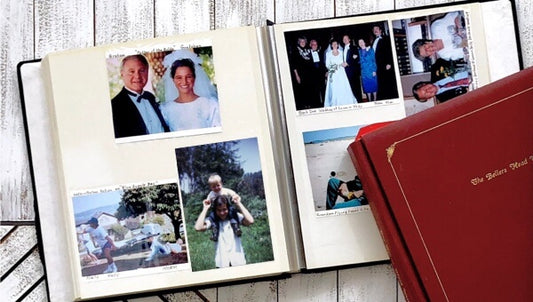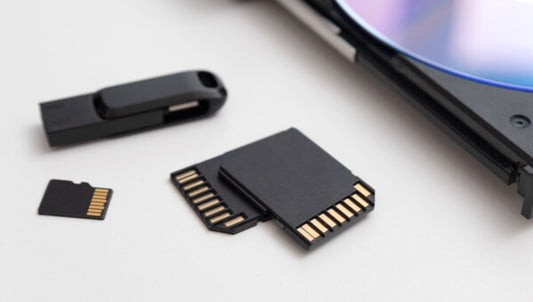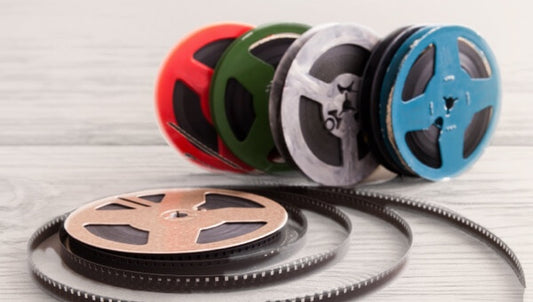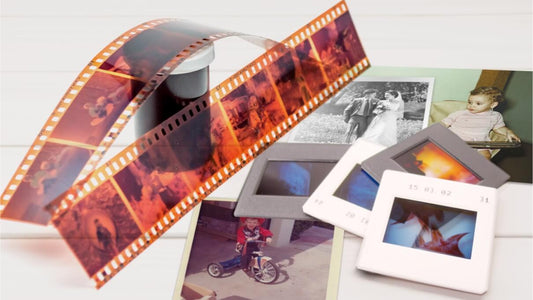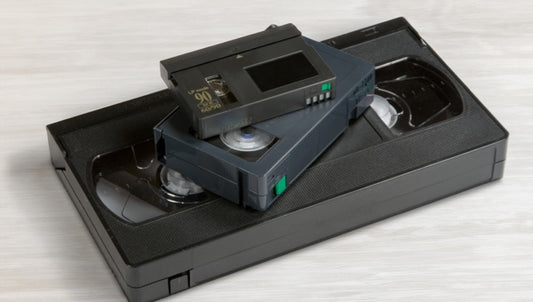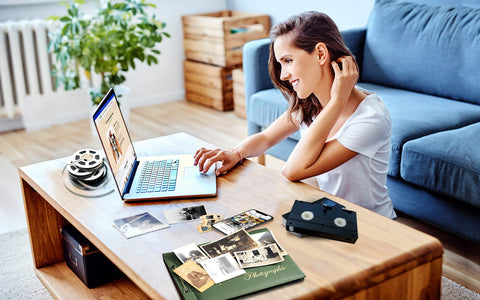While digital video has largely replaced 8mm film, there’s still something charming about using a film movie camera to shoot home videos or motion pictures. Some filmmakers prefer 8mm film cameras for a variety of reasons including analog effects, contrast, and nostalgic aesthetics.
Those benefits are only possible if you have the right camera for 8mm filmmaking. Capture film preservation experts have over 20 years of experience digitizing film formats. We used that extensive knowledge to provide you with the best 8mm film camera options available in 2024.
Keep reading to learn about the top 5 8mm film cameras, their features, pros and cons, and everything you need to know to choose the best option to capture your precious memories or create a cinema masterpiece.
Quick List of the Top 5 8mm Film Cameras in 2024
8mm Film Camera Comparison Chart
|
Canon 514XL-S |
Nizo 801 Macro |
Beaulieu 4008 ZM II |
Kodak Brownie 8mm Movie Camera |
Bolex H-8 |
|
|
Approximate Price |
$70 - $275 |
$150 to $350 |
$400 to $1200+ |
$25 to $100 |
$150 to $350 |
|
Type of Film |
Super 8 |
Super 8 |
Super 8 |
Standard 8mm |
Standard 8mm |
|
Year Released |
1976 |
1975 |
1971 |
1960 |
1938 |
|
Sound/Silent |
Sound and Silent |
Sound and Silent |
Silent |
Silent |
Silent |
|
Additional Features |
5x power zoom lens, over/under exposure warning, compact design |
Easy FPS changing with auto time lapse system, modern aesthetic, excellent viewfinder |
Very sharp image quality, Reflex viewfinder, professional quality cine camera |
Iconic design, collapsible viewfinder, easy to use exposure dial |
Tri-focal viewfinder, rotating turret with three interchangeable D-mount lenses |
1. Canon 514XL-S

Image Source: https://global.canon/en/c-museum/product/cine293.html
This Super 8mm film camera was first released in September of 1976 as a competitor to the Eastman Kodak Ektachrome line and Ektasound magnetic recording system as well as the Chinon sound cameras of the era. However, it offers a lightweight, compact design that improved upon the Canon 310XL model. This makes it an exceptional choice by installing sound mechanisms in the extended part of the body.
One of the best things about this Super 8 camera is its sophisticated sound quality. The sound features offer additional features including audio level control, tone select functions, and more. In addition, it offers power zooming with Canon auto zoom feature, over and under exposure warnings, battery warnings, and more, making it an advanced option that still holds up well alongside the digital media of today.
While analog 8mm film camera enthusiasts adore this camera for its overall sound and video performance, there are a couple of downsides. It’s a little difficult to use for beginners because of the advanced functionality and the viewfinder is a little lacking on an otherwise superb video camera.
Pros
- Great sound quality with additional sound control features
- Lightweight and compact design
- Good film quality with power zoom lens
- Exposure and battery warnings
Cons
- Not easy to use for beginners
- Viewfinder isn’t exceptional
2. Nizo 801 Macro

Image Source: https://www.ebay.ph/itm/256169839451
This is the perfect option for people new to Super 8 film because it’s a vintage camera that offers much better quality than older Bell & Howell 8mm cameras but is also easier to use for home movies.
This Nizo model offers an automatic time lapse system and variable shutter that makes it easy to go from 6 frames per second to one frame per minute. Not only that, but this Super 8 film camera is very sturdy and durable using aluminum casing that is as strong as it looks.
The viewfinder is great and easy to see with manual and split image focusing. It offers remote control sockets as well as a comfy handle for easy, fun, and efficient filming. However, the lens on this model, while good as far as lighting and Super 8 image quality go, can scratch very easily and is also prone to flare because the glass is directly in front of the lens.
Also, while it offers better sound quality than the 60s 8mm cameras by big-name brands like Minolta or Nikon, it wasn’t the best sound quality for the mid 70s.
Pros
- Easy to use for beginners
- Auto-time lapse and variable shutter for easy FPS changing
- Durable and sturdy
- Attractive design comes in either black or silver
- Lens scratches and shows flares easily
- Sound quality is below average for 1975
3. Beaulieu 4008 ZM II

Image Source: https://www.ebay.ph/itm/155766450360
This Beaulieu 4008 ZM II model is known as one of the best, if not the best, 8mm film stock cameras of all time and is still cherished by cine film professionals and often preferred over high-quality digital cameras. That’s because this Super 8mm camera is made for silent movie-making in every possible way from the extremely sharp image quality to the lens interchangeability, macro zoom, and unique craftsmanship.
This Super 8 mm film camera has an incredible viewfinder with diopter correction and indicators for film transport, exposure, and battery check. The frame rate is highly adjustable with 2, 4, 8, 18, 24, 36, 50, and 70 fps as well as single frame. Plus, you can still get tons of accessories for this vintage film camera because it’s often a prized possession of camcorder collectors.
The main negative aspect of this camera is the price because even the most worn-out options that don’t come with accessories can cost a few hundred bucks. For a good condition refurbished option, you can pay as much as $1200 or more. Another aspect of this camera that people don’t like so much is the fact that it’s silent, which is not preferable depending on what you plan to use it for.
Pros
- Professional image quality
- Lens interchangeability and highly adjustable film types including fps
- Exceptional viewfinder with diopter correction and exposure indicators
- Durable with a unique design designated one of the best of all time
Cons
- More expensive than alternatives
- Doesn’t film with sound
4. Kodak Brownie 8mm Movie Camera

Image Source: https://www.ebay.com/itm/235193678417
It was hard to decide whether to include this standard 8mm film camera or the Bauer C1m that came out a few years later, but we chose the Kodak Brownie because of the iconic design that is both nostalgic and functional. It’s easy to operate with a simple exposure knob to capture home movies in good quality for an affordable price (back in 1960 and today!).
This camera uses the Kodak Cine-Ektanon lens with fixed focus, that’s great for simple home movies. The shutter and claw mechanisms are durable and encase the box-shaped designs for easy portability, especially when you consider the collapsible viewfinder.
While this camera is iconic with a look that started with the original Kodak Brownie in 1900, it doesn’t deliver the highest quality 8mm film results. However, for 1960 it was about as “point-and-shoot” as you could get, which makes it an affordable and easy to use option for beginners. 
Pros
- Easy to use for beginners
- Very affordable with refurbished options under $100
- Portable with collapsible viewfinder
Cons
- Below average image quality
- Uncomfortable design for filming home movies
5. Bolex H16

Image Source: https://www.ebay.ph/itm/175874282043
Introduced shortly after the H-16, a popular 16mm spool camera from the 1930s, the Bolex H-8 model developed a style that would continue for years, even decades, with 8mm cameras like the Yashica 8 and several Elmo Super 8 models that were so popular. While the Bolex H-8 is older and not as popular, it’s still an incredible camera with a tri-focal viewfinder and rotating turret that makes shooting film really fun while also capturing high-quality video.
Plus, it’s very flexible with three interchangeable D mount lenses as well as both moving and still frame options available. It can attach to a 3/8” tripod and also offers time lapse and animation with single frame filming. While historic coming from 1938, it’s still available affordably and in good condition because they were built to last.
The main downside to using this camera is the fact that it’s very heavy, which limits the ability to use it for simple home movies. Plus, the viewfinder isn’t great and is also uncomfortable for modern moviemakers. Finally, many collectors use this model as a converter to Super 8 film to upgrade the frame size, which is why this model remains so popular.

Pros
- Three interchangeable D mount lenses mean good flexibility and quality
- Very durable with analog components that are still working 80+ years later
- Lots of fun to use and affordable
Cons
- Very heavy and impractical
- Poor quality viewfinder
8mm Film Camera Buying Guide

When shopping for an 8mm film camera, there are some factors you should consider to ensure you get the highest possible quality for your home films. Let’s look at some things to keep in mind!
Film Type
With 8mm film, there are two types: standard 8mm and Super 8 mm. Standard 8 mm film will not produce sound during filming, so if you want sound, you can quickly narrow down your options to Super 8 mm. In addition, not all Super 8 mm cameras shoot sound. Furthermore, you may want to ask yourself, “where can I buy 8mm camera film?” because you may find it’s easier to find one type than the other.
Image Quality
While all of the camera options we provided you offer decent image quality, some are certainly better than others. You can also consider how easy it is to upgrade the lens and other features in order to improve the image quality on cheaper models.
Ease of Use
Some 8mm film camera options are quite heavy, bulky, and difficult to use, while others are designed for beginners. If you are new to 8mm filming, you need to consider an option that’s both easy to use and offers modern features to make adjusting to the analog format easy.
Budget
Finally, you obviously want to consider your budget when choosing a camera because some options can cost hundreds of dollars, especially if you want a refurbished product. You can find decent cameras for $50 to $100, especially if you have the time to wait for something to show up on eBay.
Conclusion
These are the best 8mm and Super 8 mm camera options according to experts because they are fun to use, offer good image quality, and help you capture family memories or create films in 8mm film format. This is a great way to capture new memories and explore the entire world of 8mm film.
Unfortunately, film can degrade over time. Since it probably contains priceless memories, we recommend preserving your precious memories in high-quality digital format before it’s too late.
Capture can preserve your 8mm and Super 8mm memories as well as 16mm film, VHS tapes, Betamax tapes, and more. With digital copies, you will be able to easily enjoy and share memories you haven’t seen in years. Click here to learn more about our film digitization services!


